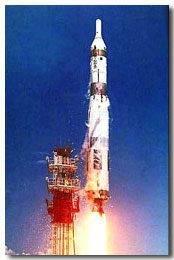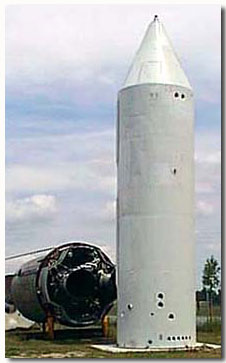HGM 25 Titan I
S/N 4628

 Nobody at California Polytechnic College in San Luis Obspo, California, could recall exactly how and when their huge Titan I rocket complex showed up, but it was about 30 years ago. Since that time the relic had laid unceremoniously outside of the Aeronautical Engineering building, slowly being etched away by the salty mists from Morro Bay that visit nightly. The Titan 1 program began in May of 1955 with the first successful launch three years later. The first launch of the Titan 1 from Vandenberg AFB was on 3 May, 1961 and the last Titan 1 launched from Vandenberg AFB was on 5 March, 1965. The Titan was the second Intercontinental Ballistic Missile (ICBM) of the USAF's first multi-stage design and the largest ICBM ever deployed by the United States — a principal deterrent during the Cold War. The Titan 1 was followed by the — Titan II which went on to serve as a launch vehicle for NASA's Gemini manned space program from the mid-1960s through the '70s. Deactivation of the Titan program came in 1984. This particular Titan 1 was likely was a left-over from the 395th Missile Training Squadron at Vandenberg AFB near Lompoc, where several were converted from nuclear missiles to space launchers. Cal Poly was more than glad to get rid of it, and we were equally glad to accept it. It is presently set upright in front of the museum hangar, both as a landmark and as a symbol of the pioneer space programs, but minus its center section — zoning laws and prevailing winds won't permit its full height. That part of the original rocket which held its liquid fuel cells (which held Lox/Kerosene) had deterioriated beyond economic restoration. Once a mighty creature of the sky, Titan I and II served its original purpose as a peacekeeper, but outlived its usefulness and now has earned a place of honor in our nation's history. This is the only known one existing on the West Coast. Manufactured by Glenn L. Martin Co, (now Lockheed Martin) Marietta GA.
|




Tidak ada komentar:
Posting Komentar